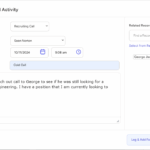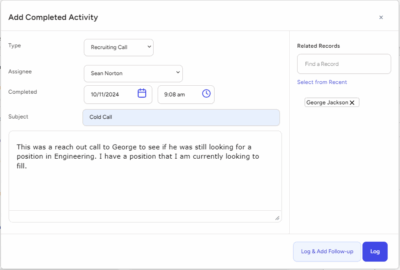When you’re engaged in critical money making activities, is it best to multi-task or single-task?
By far, the answer in most cases is to single-task . . . and that’s why this blog post is going to be about debunking the myth of multi-tasking for recruiters.
For a lot of us type-A entrepreneurs, this concept seems to defy logic, as we assume we can spin more plates than the average person. The truth is we can spin more plates than the average person, but that doesn’t mean that all of that plate spinning is making us more productive.
As John Medina, author of Brain Rules, says: “To put it bluntly, research shows that we can’t multi-task. We are biologically incapable of processing attention-rich inputs simultaneously.”
Keep in mind that there are three phases to any activity:
- Start-up
- Doing
- Winding down
The “start-up” and “winding down” phases take the same amount of time, regardless of how long you spend “doing.” So for example, it takes the same amount of time to start up and wind down a one-hour batch of recruiting calls as it does for a 15-minute batch of calls.
However, the “doing” time is very different. According to Peter Drucker, one hour of uninterrupted time is worth 10 times the amount of four 15-minute segments because the leverage of the uninterrupted “doing” time has increased by that much.
Recruitment tasks and personal experience
An example from my personal experience:
When I first started out as an executive recruiter, I was told that I needed to make 50 calls per day in order to become a top producer. I began tracking my calls and was surprised to learn that I was only getting out around 20 calls a day. For several days, I tried to speed up my pace, but still ended up around the 20-call mark. I was becoming very frustrated, as I knew I was capable of much better performance.
Then I made two critical changes:
- I started planning my calls out the night before.
- I started single-tasking during my outgoing call batches.
The first day that I made these two changes, I jumped from 20 calls per day to 37 calls. Within a couple more days, I was up to 50 calls per day. The result was that I witnessed an immediate jump in my performance and my self-confidence.
What I came to understand was that when I was only getting 20 calls out per day, I was multi-tasking and working in a reactive mode.
For example, here’s what an hour of my time looked like while multi-tasking:
I’d make a sales call, then switch to a recruiting call, then I’d look up information on another prospect, then I’d take an incoming call from an applicant, then I’d enter some data into the database, then I’d make another sales call, then look up some company info, then I’d get a call from a person I couldn’t help, then I’d make a recruiting call etc. . . . even typing this makes me feel neurotic.
I was working my ass off but was terribly ineffective.
When I began single-tasking, here’s what that same hour looked like:
Make a sales call, make another sales call, make another sales call, make another sales call, make another sales call, make another sales call, make another sales call, make another sales call, etc.
I would not accept incoming calls during an outgoing call batch unless it was a critical, deal-making call. All other callers went to voicemail. I then returned their calls at the end of the hour in one batch. This made me much more productive. If you need to employ recruiting software to help schedule your calls in advance, then make it happen.
Recruitment tasks and single-tasking
Here are some six ideas for implementing the power of single-tasking:
- Give single-tasking a try for just a small set of hours, such as from 9 a.m. to noon, to see how it affects your focus and productivity.
- Tell your staff/family/friends, etc. that you’re unavailable during prime work hours (9-12 and 1-4) and to hold their questions until you’re available . . . unless it’s a time-sensitive issue.
- Let your calls go to voicemail while single-tasking (unless they’re money calls).
- Detox from constant email checking. Return all calls and check email at set times during your day.
- Separate preparation from execution: do all of your research and planning for tomorrow at the end of the day today. Then tomorrow you’ll spend your golden hours performing without the need to think about what comes next.
- Batch your tasks into 50-minute segments and take breaks regularly to stay sharp.
— — —
Gary Stauble, a guest writer for the Top Echelon Recruiter Training Blog, is the principal consultant for The Recruiting Lab, a coaching company that assists firm owners and solo recruiters in generating more profit in less time. For more information or to schedule a complimentary coaching session, visit www.therecruitinglab.com or call 408.849.4756.








